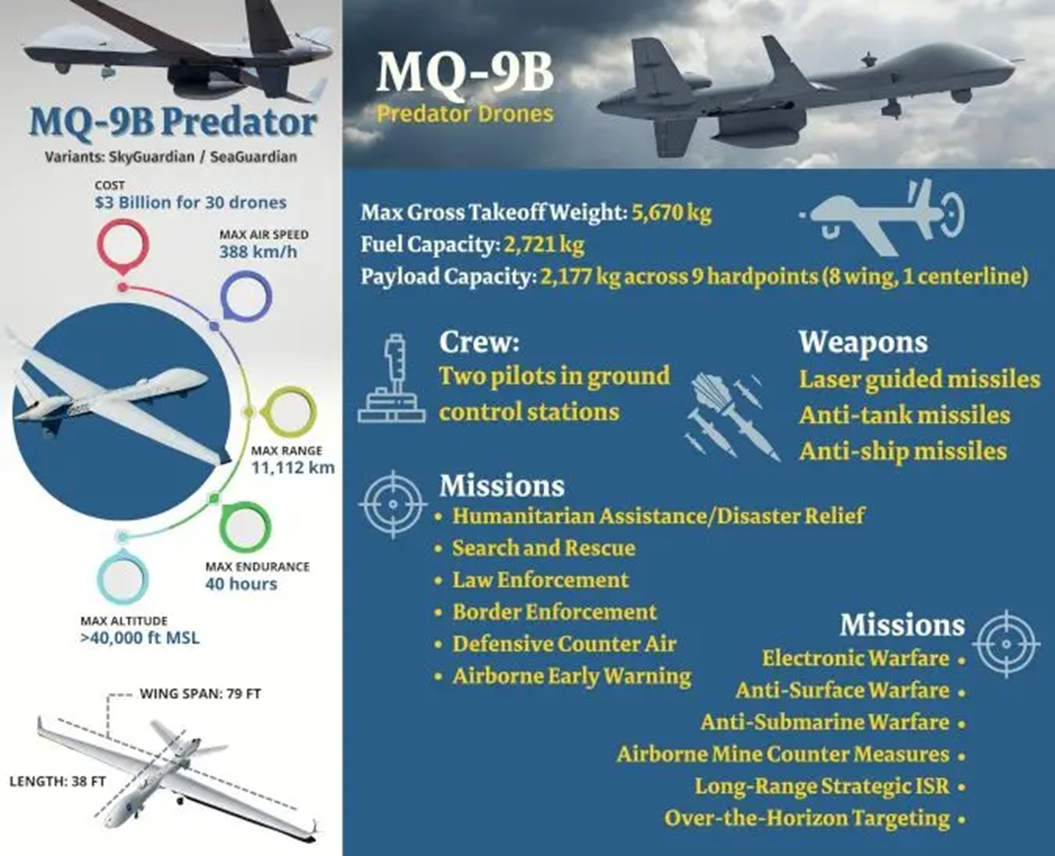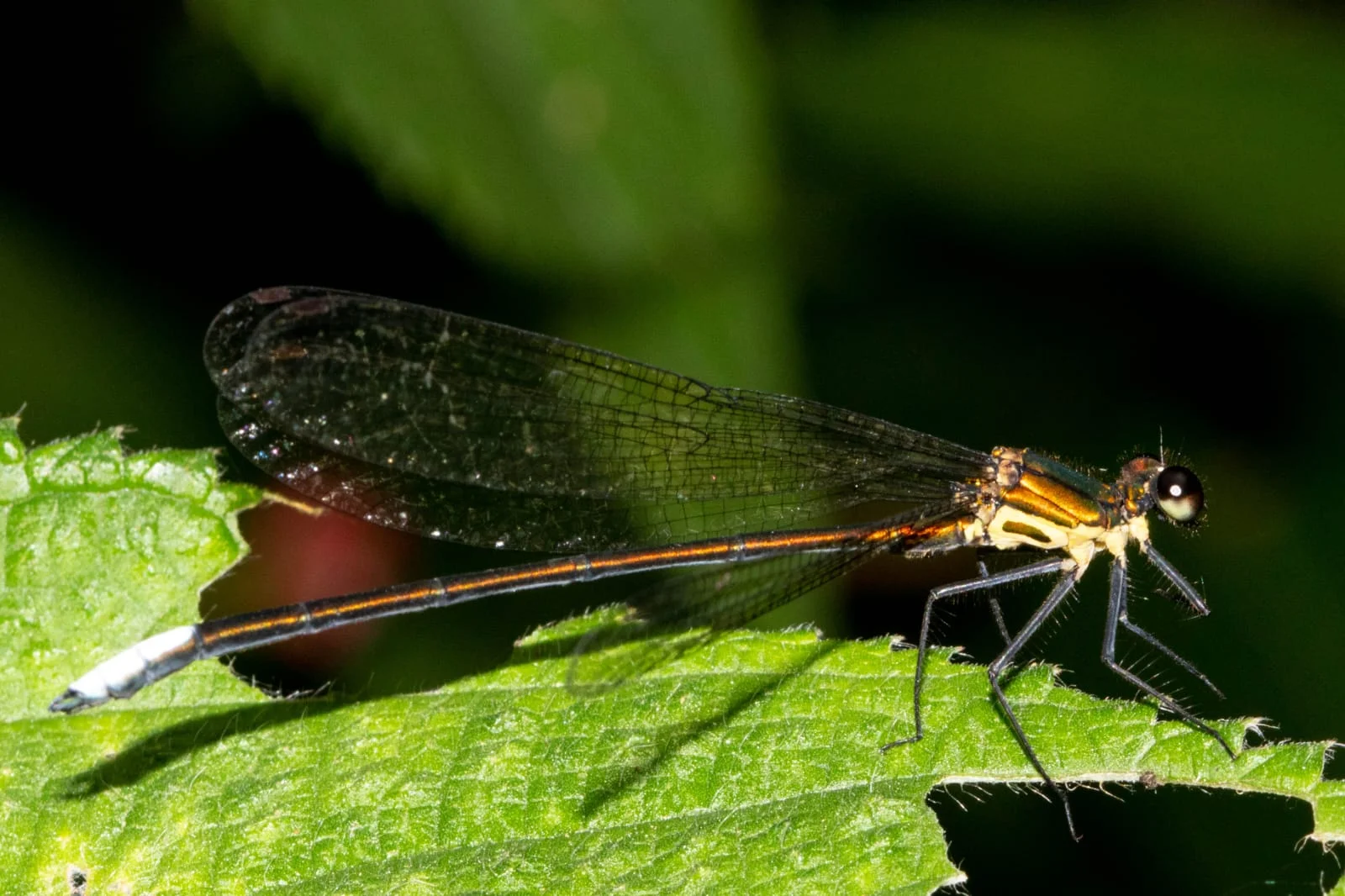- Courses
- GS Full Course 1 Year
- GS Full Course 2 Year
- GS Full Course 3 Year
- GS Full Course Till Selection
- Online Program
- GS Recorded Course
- NCERT (Recorded 500+ Hours)
- Polity Recorded Course
- Geography Recorded Course
- Economy Recorded Course
- AMAC Recorded Course
- Modern India, Post Independence & World History
- Environment Recoded Course
- Governance Recoded Course
- Science & Tech. Recoded Course
- International Relations and Internal Security Recorded Course
- Disaster Management Module Course
- Ethics Recoded Course
- Essay Recoded Course
- Current Affairs Recoded Course
- CSAT
- 5 LAYERED ARJUNA Mentorship
- Public Administration Optional
- ABOUT US
- OUR TOPPERS
- TEST SERIES
- FREE STUDY MATERIAL
- VIDEOS
- CONTACT US
DAC Approves Amendment to MQ-9B UAV Deal with U.S.
DAC Approves Amendment to MQ-9B UAV Deal with U.S.
31-07-2024

Defence Acquisition Council (DAC), chaired by the Defence Minister, has reviewed and approved amendments to the deal for 31 MQ-9B High Altitude Long Endurance (HALE) Unmanned Aerial Vehicles (UAVs) from General Atomics of the US.
- This development is significant as it marks a step forward in India's defence procurement and strategic partnership with the US.
Must Read: MQ-9B Predator: A Multi-Purpose Aerial Asset
Key Points
- DAC Approval: The DAC reviewed and approved amendments to the deal for 31 MQ-9B HALE UAVs from General Atomics of the US.
- Scope of Amendments: The amendments are within the scope of the Acceptance of Necessity (AoN) granted for the MQ-9B deal. They relate to the indigenous content and related aspects.
- Aircraft Carrier Refit: The DAC also gave approval to the proposal regarding the scheduled refit of aircraft carrier INS Vikramaditya later this year.
- Completion of Process: The US has completed the process from its end with a letter of offer and acceptance delivered to India in early March. India now needs to complete the procedure before the deal can be signed.
- Cabinet Committee Approval: The deal must be approved by the Cabinet Committee on Security before it can be finalized.
- Expected Conclusion: With the Quad leaders summit scheduled to be hosted by India in December, the MQ-9B deal, as well as the GE-414 jet engine deal, are expected to be concluded during the visit of the U.S. President to India.
- Procurement Details: India is looking to procure 31 MQ-9B UAVs, including 15 Sea Guardians for the Indian Navy and 16 Sky Guardians – eight each for the Indian Army and Air Force, estimated to cost $3.99 billion.
- Global Maintenance Facility: As part of the deal, General Atomics is scheduled to establish a Global Maintenance, Repair, and Overhaul (MRO) facility in India, which would count towards offset obligations.
Advanced Land Navigation System (ALNS)
- DAC Approval: The DAC also accorded Acceptance of Necessity (AoN), the first step of the procurement process, for the procurement of the Advanced Land Navigation System (ALNS) for Armoured Fighting Vehicles (AFVs) of the Army and 22 Interceptor Boats for the Coast Guard.
- Compatibility: The ALNS Mk-II is compatible with the Indian Regional Navigation Satellite System (IRNSS, NavIC), in addition to the Global Positioning System (GPS) and Global Navigation Satellite System (GLONASS).
- Features: The ALNS Mk-II offers compatibility with defence series maps, resulting in very high accuracy in navigational applications for AFVs. This equipment will be procured from Bharat Electronics Limited, Chennai, under the Buy [Indian-Indigenously Designed, Developed, and Manufactured (IDDM)] category of the procurement procedure.
- Encryption: The system is spoof-proof with high levels of encryption.
Interceptor Boats for Coast Guard:
- DAC Approval: The second AoN is for the procurement of 22 Interceptor Boats for the Coast Guard with the latest state-of-art systems capable of quick interception and shallow water operation in territorial waters.
- Usage: These boats will be used for coastal surveillance & patrolling, search & rescue operations, including medical evacuation.
About Defence Acquisition Council (DAC):
- Description: The Defence Acquisition Council (DAC) is the highest decision-making body of the defence ministry on procurement.
- Main Objective: The main objective of the DAC is to ensure expeditious procurement of the approved requirements of the armed forces in terms of capabilities sought and time frame prescribed by optimally utilizing the allocated budgetary resources.
- Formation: It was formed after the Group of Minister's recommendations on 'Reforming the National Security System' in 2001, post-Kargil War (1999).
- Composition: The Defence Minister is the chairman of DAC. Its members include the Chief of Defence Staff (CDS) and chiefs of the Army, Navy, and Air Force.
- Functions:
- Give in principle approval of a 15-year Long Term Integrated Perspective Plan (LTIPP) for defence forces.
- Accord of acceptance of necessity to acquisition proposals.
- Categorisation of the acquisition proposals relating to ‘Buy’, ‘Buy & Make’, and ‘Make’.
- Look into issues relating to single vendor clearance.
- Take decisions regarding ‘offset’ provisions in respect of acquisition proposals above ₹300 crore.
- Take decisions regarding the Transfer of Technology under the ‘Buy & Make’ category of acquisition proposals.
- Field trial evaluation.
What is the MQ-9B Predator Drone?
- Description: The MQ-9B drone is a variant of the MQ-9 "Reaper", an unmanned aerial vehicle (UAV) capable of remotely controlled or autonomous flight operations. These are high-altitude, long-endurance drones armed with strike missiles that can take out enemy targets with high accuracy.
- Development: It was developed by General Atomics Aeronautical Systems (GA-ASI), primarily for the United States Air Force (USAF).
- Variants: The MQ-9B has two variants – SkyGuardian and its sibling SeaGuardian. The Indian Navy has been operating the MQ-9B Sea Guardian since 2020.
What is Unmanned Aerial Vehicle (UAV)>?
- Unmanned Aerial Vehicles (UAVs), also known as drones, are aircraft that fly without a human pilot or passengers onboard.
- They can be fully autonomous, partially autonomous, or remotely controlled by a human operator.
Takeoff and Landing Capabilities
- Not all UAVs can land vertically—only those designed with VTOL (Vertical Take-Off and Landing) capability can do so.
- Multirotor UAVs (like quadcopters and hexacopters) can take off and land vertically using multiple rotors, making them ideal for tight spaces.
- Fixed-Wing UAVs, which look like small airplanes, need a runway or launching system and cannot land vertically unless they are hybrids.
- Hybrid VTOL UAVs combine multirotor and fixed-wing features, enabling both vertical takeoff/landing and long-distance flight.
Hovering Capabilities
- Hovering means staying in one place in the air without moving forward or backward.
- Multirotor UAVs can hover easily thanks to precise control of their rotors, often with GPS and autopilot for stable hovering.
- Fixed-Wing UAVs cannot hover because they need continuous forward movement to stay airborne—like traditional planes.
Power Sources
- UAVs use different power sources depending on their size and purpose.
- Battery-powered UAVs, often using lithium-polymer or lithium-ion batteries, are common in small drones and are quiet and clean, but have limited flight time.
- Internal combustion engine UAVs use petrol or diesel and are suitable for larger drones needing longer endurance.
- Fuel cell-powered UAVs are highly energy-efficient and are used in advanced or specialized missions.
- Hybrid-powered UAVs combine two or more power sources (like batteries and engines) to balance performance and endurance.




